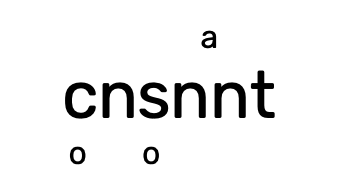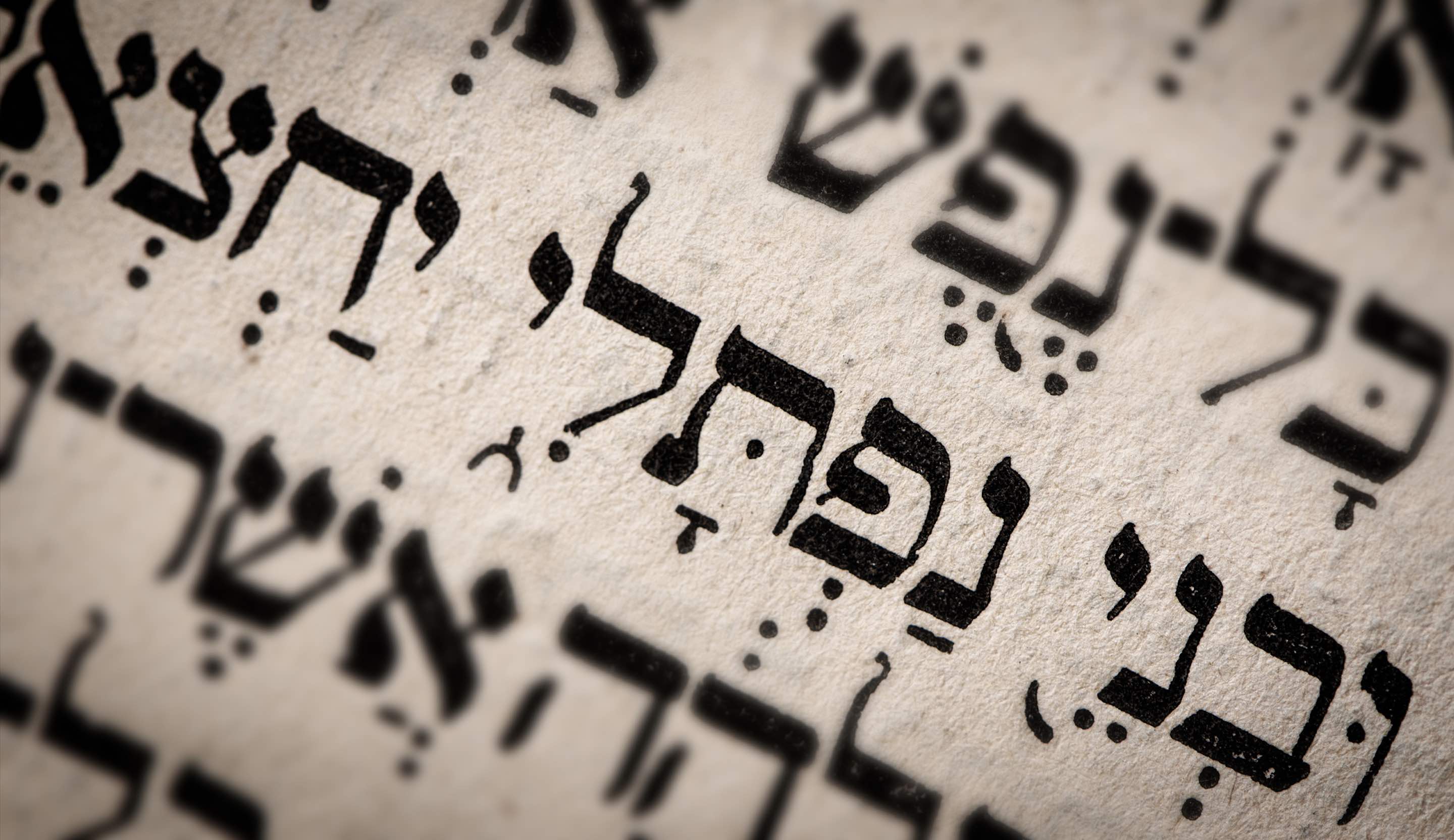Lesson 3 | Vowels
[2] The Vowels
A vowel’s sound follows the letter it is under, above, or next to. For example, if the vowels in English were written under the consonants, the word “vowel” would look like this:

But some vowels are written above their letters. So a word like “consonant” could look like this:

There are six basic vowel sounds with the modern pronunciation we are using, though some of these sounds have 2-3 actual vowels markings associated with them. For the purposes of this course, we will not often be distinguishing between the markings for a single vowel sound. The names of the vowels are also not the most important, but are listed below (and on the cheat sheet at the bottom of this step) since we will need to talk about them from time to time.
Note also that in the chart below you will find the letter א repeated. It is simply there as a placeholder, since Hebrew vowels need a letter to be under, above, or next to.
You do not need to memorize all the details below. Rather, this lesson step is meant to be a reference. The immediate learning goal is that you would know the sound of each vowel marking so as to be able to read Hebrew.
So here we go. Don't be intimidated. Just try to absorb. You will find many examples and opportunities to practice in this course.
Either like the e in red or in grey
אֵ
Tsira
אֶ
Segol
אֱ
Tsira always sounds like the e in grey when followed by י.
These are often referred to as e-class vowels.
These are often referred to as e-class vowels.
Like the a in aqua
אָ
Kamatz
אַ
Patach
אֲ
When patach is followed by יִ, together they sound like the y in cyan.
These are often referred to as a-class vowels.
These are often referred to as a-class vowels.
Like the ee in green
אִ
Chirik
Like the o in yellow
אׂ
Cholam
אָ
Kamatz
אֳ
Notice that kamatz can sound like both a and o.
Most of the time it makes an a sound.
When it does make an o sound, it is technically called a kamatz hatuph.
Most of the time it makes an a sound.
When it does make an o sound, it is technically called a kamatz hatuph.
Like the ue in blue
אֻ
Kubutz
וּ
Shureq
Notice that a middle dot here is a vowel called a shureq.
This is only the case for the letter ו.
This is only the case for the letter ו.
Silent (or a very short e sound)
אְ
Shva
Often ends a syllable or allows consonants to combine.
 Hebrew I Cheat Sheetpdf
Hebrew I Cheat SheetpdfPrint this reference out and keep it at hand throughout the course. It contains a summary of everything we will learn in this course.
More on vowel-absorbing letters
Now that you have been presented with the vowels, let’s examine when those vowel-absorbing letters lose their consonantal function.
For ו, you do not pronounce the ‘v’ sound when it contains a cholam (וֹ) or shureq (וּ). In such cases, you only pronounce the vowel.
For י and ה, if these letters do not have a vowel mark underneath them or a וֹ or וּ following them, then they have been absorbed into the vowel of the proceeding letter. In such cases, you will not pronounce the ‘y’ or ‘h’ sound.
Here are some examples where י ,ו, and ה are not pronounced.
בְּרֵאשִׁית פְּנֵי אוֹר כִּי טוֹב בֵּין וּבֵין עֹשֶׂה
Vocal Shva
When a shva should be pronounced, it is called a “vocal shva.” If a shva occurs by itself at the beginning of a word, you will pronounce it with a very short “e” sound. If two shva‘s occur in a row, the first one is silent and the second one is vocal.
Now that you’ve begun to learn vowels, can you pronounce the name in the picture below, which you saw in the Lesson Objectives step of this lesson? Which tribe of Israel is this?
Log in / create an account to enroll or continue where you left off.
